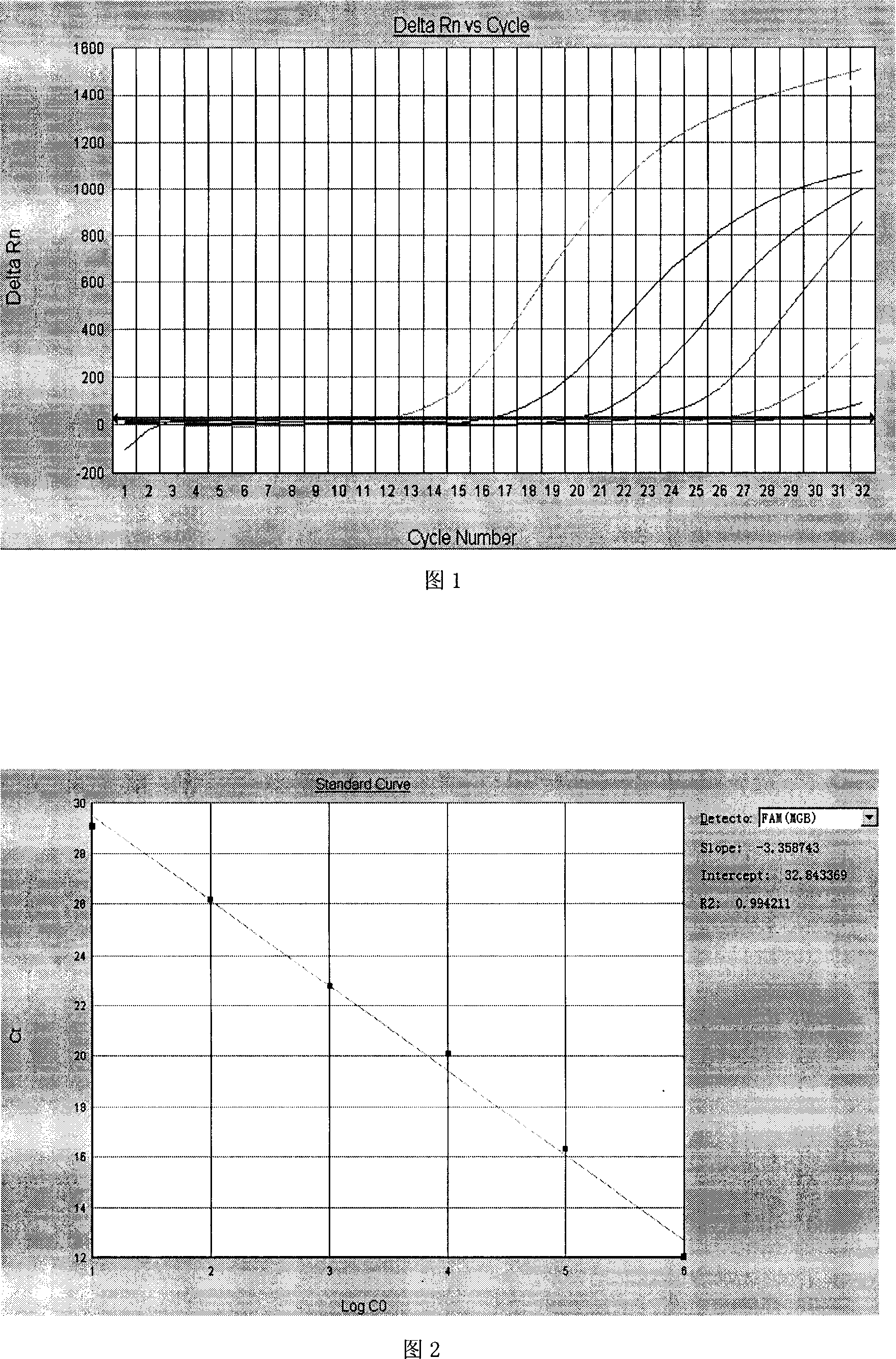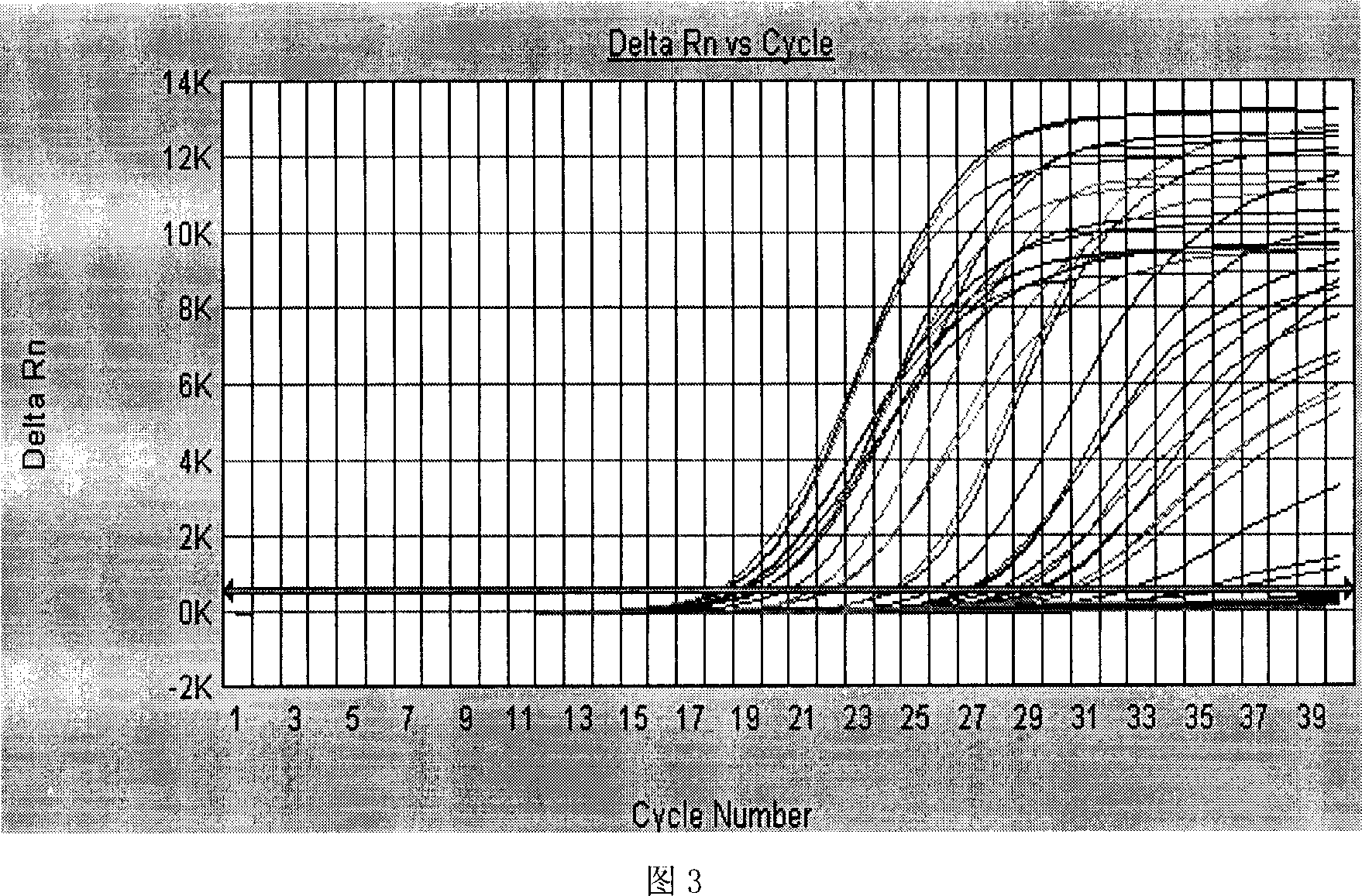Polymerase chain reaction (PCR) method for diagnosing human papillomavirus (HPV) and reagent kit thereof
A technology of papilloma virus and chain reaction, which is applied in the field of life sciences to achieve the effect of saving money, time and reagents
- Summary
- Abstract
- Description
- Claims
- Application Information
AI Technical Summary
Problems solved by technology
Method used
Image
Examples
Embodiment 1
[0035] Example 1: Design of primers and probes
[0036] Studies have shown that between the L1 region sequences of the various types of HPV genomes, there are not only certain homology, that is, HPV conservative sequences, but also certain polymorphisms, namely type specificity, and type specific primers can be designed according to type specific sequences. . The principle of designing primers and probes for detecting 18 high-risk HPV types in this example is to select adjacent polymorphic sequences to design specific forward primers in the L1 region of the HPV genome (the target sequence position is about bp800-bp1200 in the L1 region) With reverse primers, and probe sequences, multiplex PCR is performed in a reaction tube, and the universal TAQMAN-MGB probe for 18 high-risk HPVs is used to detect 18 high-risk HPVs. Template denaturation temperature is 92-97℃; primer annealing temperature is 50-65℃; DNA polymerase catalyzes extension to synthesize complementary DNA strands, and t...
Embodiment 2
[0039] Example 2: Sample preparation
[0040] In order to detect HPV infection in cervical laboratory specimens of human women, DNA is extracted from the samples and purified. In order to test whether the amount of sample DNA is sufficient, the purified DNA is amplified by PCR by detecting genes unique to the human genome, and those DNA samples showing amplification of the unique gene DNA of the human genome are selected for the next step of HPV DNA analysis. Genes unique to the human genome can be amplified by PCR using primers for the bead beta-globin gene and HMBS gene.
[0041] Preparation of positive control plasmid and negative control plasmid
[0042] The HPV sequence obtained from the sources listed in Table 1, the recombinant plasmid DNA containing the HPV L1 region target sequence constructed in our laboratory as a positive control standard, using Promega pGEM-T easy vector system ligation kit, ligate the purified PCR product to pGEM-Teasy vector, and then transform it...
Embodiment 3
[0043] Example 3 Optimization of multiplex PCR fluorescence detection reaction
[0044] Optimize the concentration of primers and probes so that 18 high-risk types of HPV can be detected simultaneously in one PCR reaction. Use ABI PRISM 7000 pairs of 18 high-risk types with 10-1000000 copies (HPV type 16, 18, 31, 33, 35, 39, 45, 51, 52, 56, 58, 59, 66, 67, 68, 69, 73, 82 ) The positive control plasmid evaluates the Ct value and Rn value, and optimizes the primer and probe concentration according to the changes of the primers and probes. Five low-risk types (HPV types 6, 11, 42, 43, 44) are used to detect specificity. Sex, that is, 18 high-risk positive control plasmids with 10-10 million copies can be detected, while negative control plasmids cannot be detected. The PCR reaction was carried out in 40 microliters of the hair mixture. The reaction mixture contained 1-2 units of TAQ polymerase, 20-200 nM of primers for each high-risk HPV, and the probe concentration was 0.02-0.6 pM...
PUM
 Login to View More
Login to View More Abstract
Description
Claims
Application Information
 Login to View More
Login to View More - R&D
- Intellectual Property
- Life Sciences
- Materials
- Tech Scout
- Unparalleled Data Quality
- Higher Quality Content
- 60% Fewer Hallucinations
Browse by: Latest US Patents, China's latest patents, Technical Efficacy Thesaurus, Application Domain, Technology Topic, Popular Technical Reports.
© 2025 PatSnap. All rights reserved.Legal|Privacy policy|Modern Slavery Act Transparency Statement|Sitemap|About US| Contact US: help@patsnap.com


